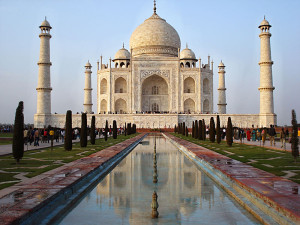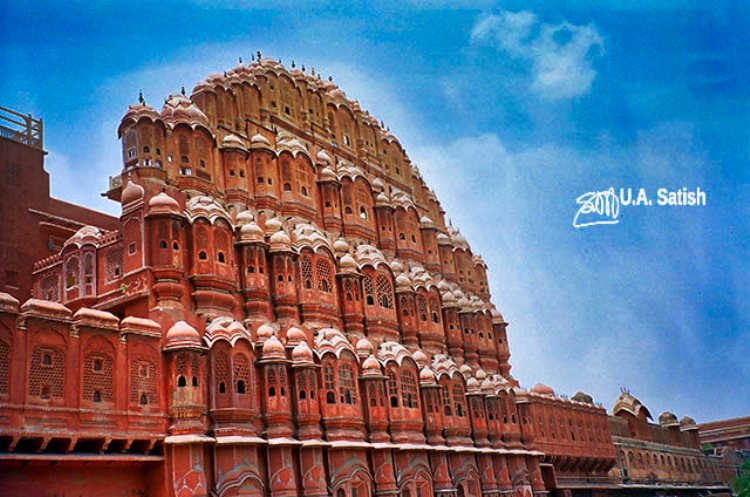Jaipur is the capital of the state of Rajasthan. It is the gateway to other tourist destinations in Rajasthan such as Jodhpur, Jaisalmer, Ajmer and Udaipur. The Golden Triangle is formed by Jaipur, Agra and New Delhi. Maharaja Jai Singh II built the city in 1726. It is 260 km from New Delhi.
Jaipur is known as the Pink City. This is because each building within the walled historic centre is painted a terracotta pink colour. Maharaja Sawai Ram Singh II had the city painted pink to welcome the Prince of Wales in 1876. The Maharaja then passed a law in 1877 making it illegal for buildings to be of any other colour than Jaipur Pink. The law is enforced even today.
Hawa Mahal iconic landmark of Jaipur
Hawa Mahal is one of the best-known tourist spots in the city. It has a unique facade with 953 windows or Jharokhas with intricate decorations. The royal ladies used to look down on the street below without they themselves being seen. A five-storied structure, it is a prime example of Rajput architecture. The pink sandstone structure is Jaipur’s iconic landmark. Visitors will view the Rajput style in the domed canopies, fluted pillars, lotus and floral patterns.
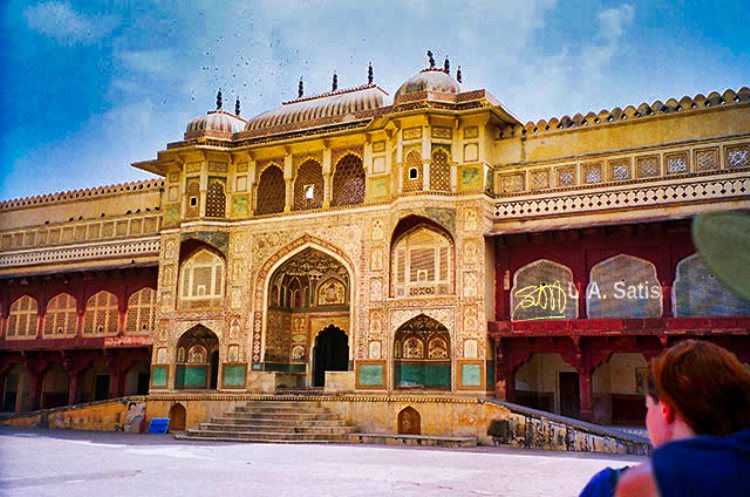
City Palace
The palace is within the walled city. It was built by Maharaja Jai Singh II, the founder of Jaipur. It is still home to the descendants of the royal family who occupy a private section of the palace. The palace contains beautiful paintings on the ceiling. Within the palace complex is Maharaja Sawai Man Singh II Museum.

Fort Moti Doongri
Moti Doongri is a small hill which has a palace on top. Built along the lines of a Scottish castle, it was the royal home of Maharaja Sawai Man Singh II. His third Maharani consort, Maharani Gayatri Devi used to reside in the palace. She passed away on 29 July 2009 in Jaipur at the age of 90.

Memorial for Martyred Soldiers in Jaipur
Amar Jawan Jyoti is a memorial to the martyred soldiers of Rajasthan. Eternal flames burn at four corners of the structure. It is brilliantly illuminated at night.

Landsaped Gardens
Located at the foothills of Nahargarh Hills, Kanak Vrindavan is a popular picnic spot. The beautifully landscaped gardens include a temple, marble columns and fountains.

Prince Albert Hall
The exquisitely designed Prince Albert Hall is located in Ram Niwas Garden. Sir Swinton Jacob was the architect. The Prince of Wales laid the foundation stone of the building in 1876. The museum displays a wide range of metal objects, wood crafts, carpets, sculptures, arms, weapons, ivory carvings and precious stones. It also showcases an impressive collection of miniatures from Bundi, Kota, Kishangarh, Udaipur and Jaipur schools of art.
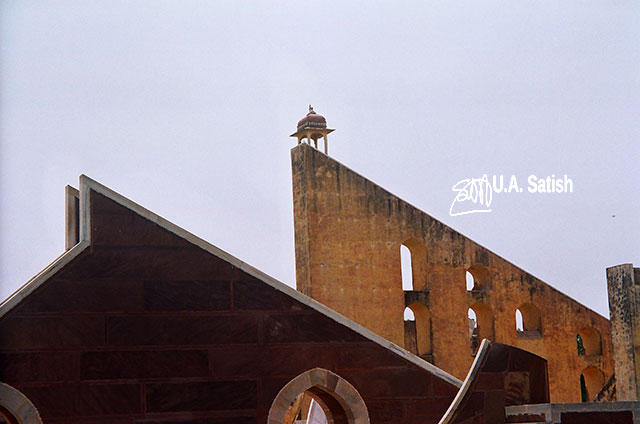
Jantar Mantar
This is the largest of the five astronomical observatories which Maharaja Sawai Jai Singh II had built. It contains sixteen geometric devices which measure time, track celestial bodies and observe the orbits of the planets around the sun. It is now a UNESCO World Heritage Site.
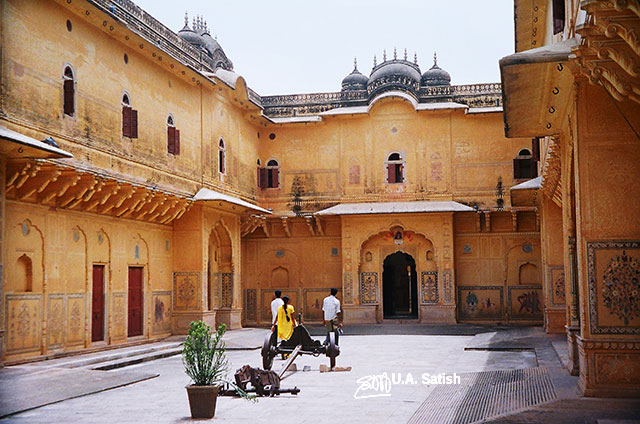
Nahargarh Fort near Jaipur
Once the residence of Sawai Jai Singh II, Nahargarh Fort is on top of a hill. The fort houses Madhavendra Bhawan which was the summer residence of the royal family. The fort looks brilliant when lit up at night. Nahargarh Fort stands on the edge of the Aravalli Hills, overlooking the city of Jaipur. Along with Amber Fort and Jaigarh Fort, Nahargarh once formed a strong defence ring for the city.
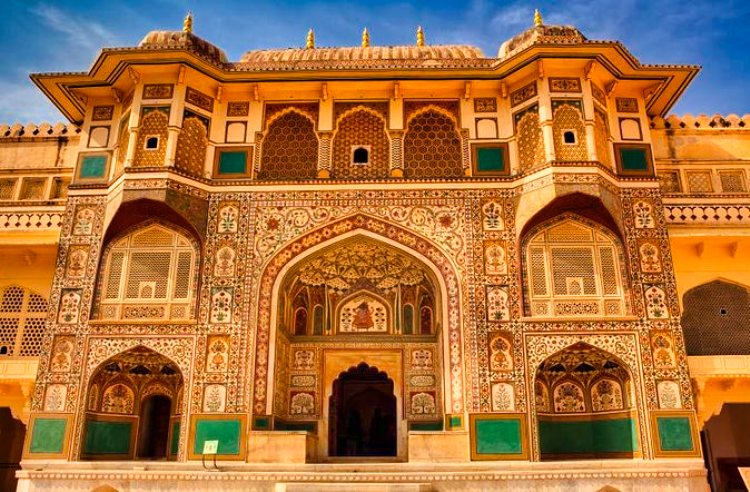
Amber Fort
At a distance of 11 km from Jaipur is Amber Fort or Amer Fort. It is on top of a hill and a major tourist attraction. The fort overlooks Maota Lake. Raja Man Singh I created this massive complex. It blends red sandstone and white marble in three stories of sublime architecture. This is a UNESCO World Heritage Site.
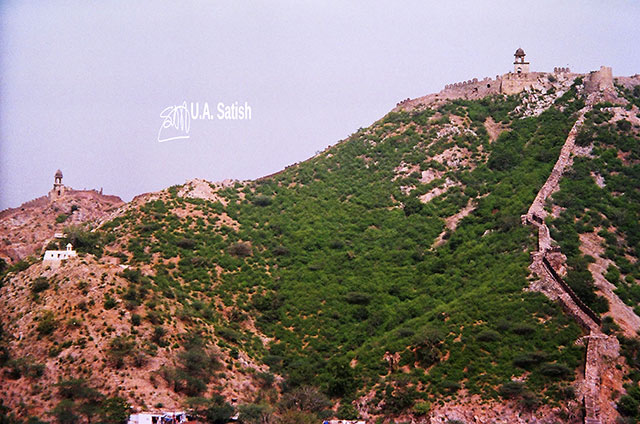
If you liked the post, you could…
Join more than 5,000 fans of UASATISH by liking us on Facebook, or follow us on Twitter and Instagram.
READ THIS NEXT:
